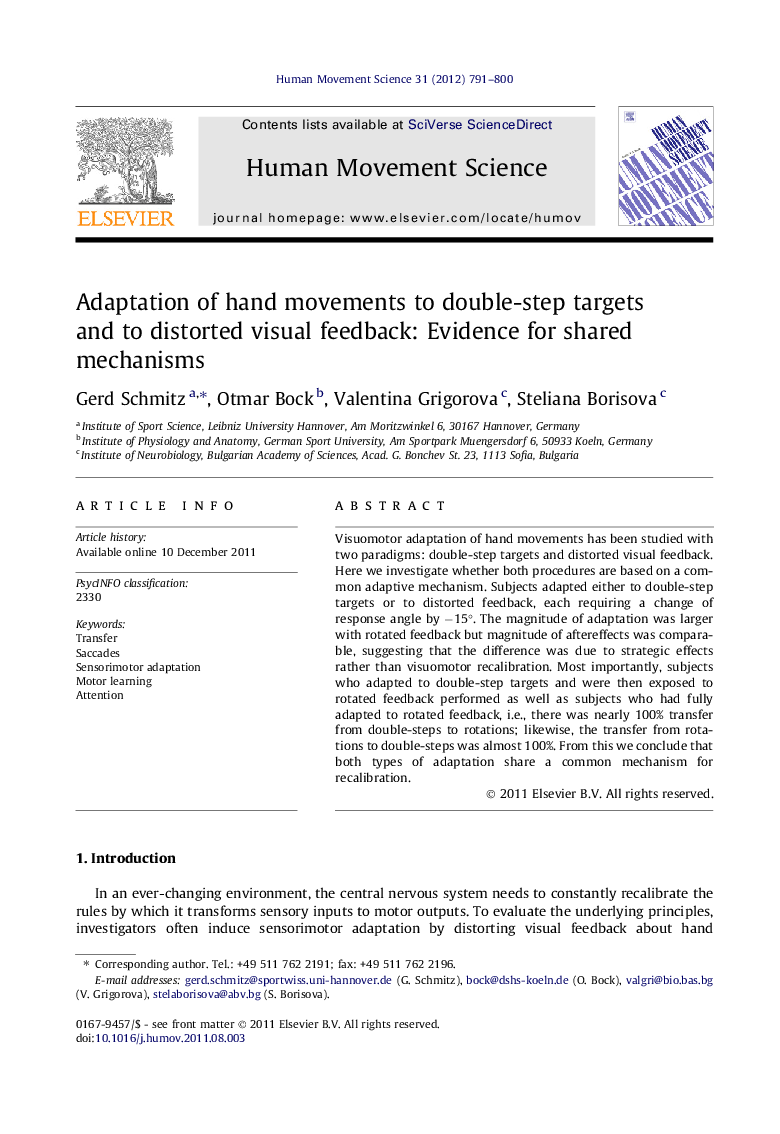| Article ID | Journal | Published Year | Pages | File Type |
|---|---|---|---|---|
| 928464 | Human Movement Science | 2012 | 10 Pages |
Visuomotor adaptation of hand movements has been studied with two paradigms: double-step targets and distorted visual feedback. Here we investigate whether both procedures are based on a common adaptive mechanism. Subjects adapted either to double-step targets or to distorted feedback, each requiring a change of response angle by −15°. The magnitude of adaptation was larger with rotated feedback but magnitude of aftereffects was comparable, suggesting that the difference was due to strategic effects rather than visuomotor recalibration. Most importantly, subjects who adapted to double-step targets and were then exposed to rotated feedback performed as well as subjects who had fully adapted to rotated feedback, i.e., there was nearly 100% transfer from double-steps to rotations; likewise, the transfer from rotations to double-steps was almost 100%. From this we conclude that both types of adaptation share a common mechanism for recalibration.
► Visuomotor adaptation of the hand is studied with different paradigms. ► We compare adaptation to rotated feedback and to double-step targets. ► Adaptive performance differs, but aftereffects are comparable. ► Transfer is nearly complete and symmetrical. The discordances activate a common mechanism for recalibration.
